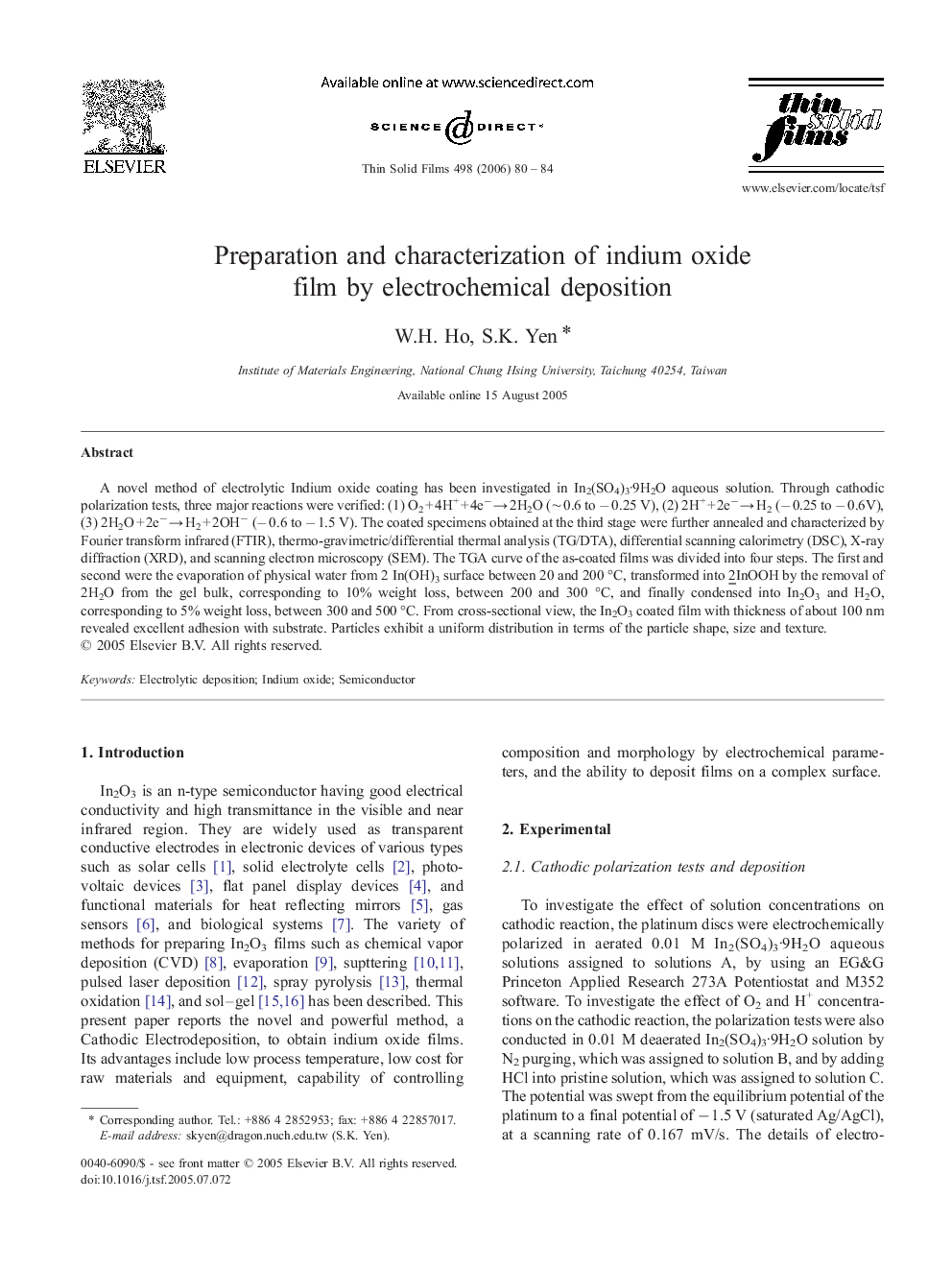| Article ID | Journal | Published Year | Pages | File Type |
|---|---|---|---|---|
| 1677113 | Thin Solid Films | 2006 | 5 Pages |
A novel method of electrolytic Indium oxide coating has been investigated in In2(SO4)3·9H2O aqueous solution. Through cathodic polarization tests, three major reactions were verified: (1) O2 + 4H+ + 4e− → 2H2O (∼ 0.6 to − 0.25 V), (2) 2H+ + 2e− → H2 (− 0.25 to − 0.6V), (3) 2H2O + 2e− → H2 + 2OH− (− 0.6 to − 1.5 V). The coated specimens obtained at the third stage were further annealed and characterized by Fourier transform infrared (FTIR), thermo-gravimetric/differential thermal analysis (TG/DTA), differential scanning calorimetry (DSC), X-ray diffraction (XRD), and scanning electron microscopy (SEM). The TGA curve of the as-coated films was divided into four steps. The first and second were the evaporation of physical water from 2 In(OH)3 surface between 20 and 200 °C, transformed into 2InOOH by the removal of 2H2O from the gel bulk, corresponding to 10% weight loss, between 200 and 300 °C, and finally condensed into In2O3 and H2O, corresponding to 5% weight loss, between 300 and 500 °C. From cross-sectional view, the In2O3 coated film with thickness of about 100 nm revealed excellent adhesion with substrate. Particles exhibit a uniform distribution in terms of the particle shape, size and texture.
